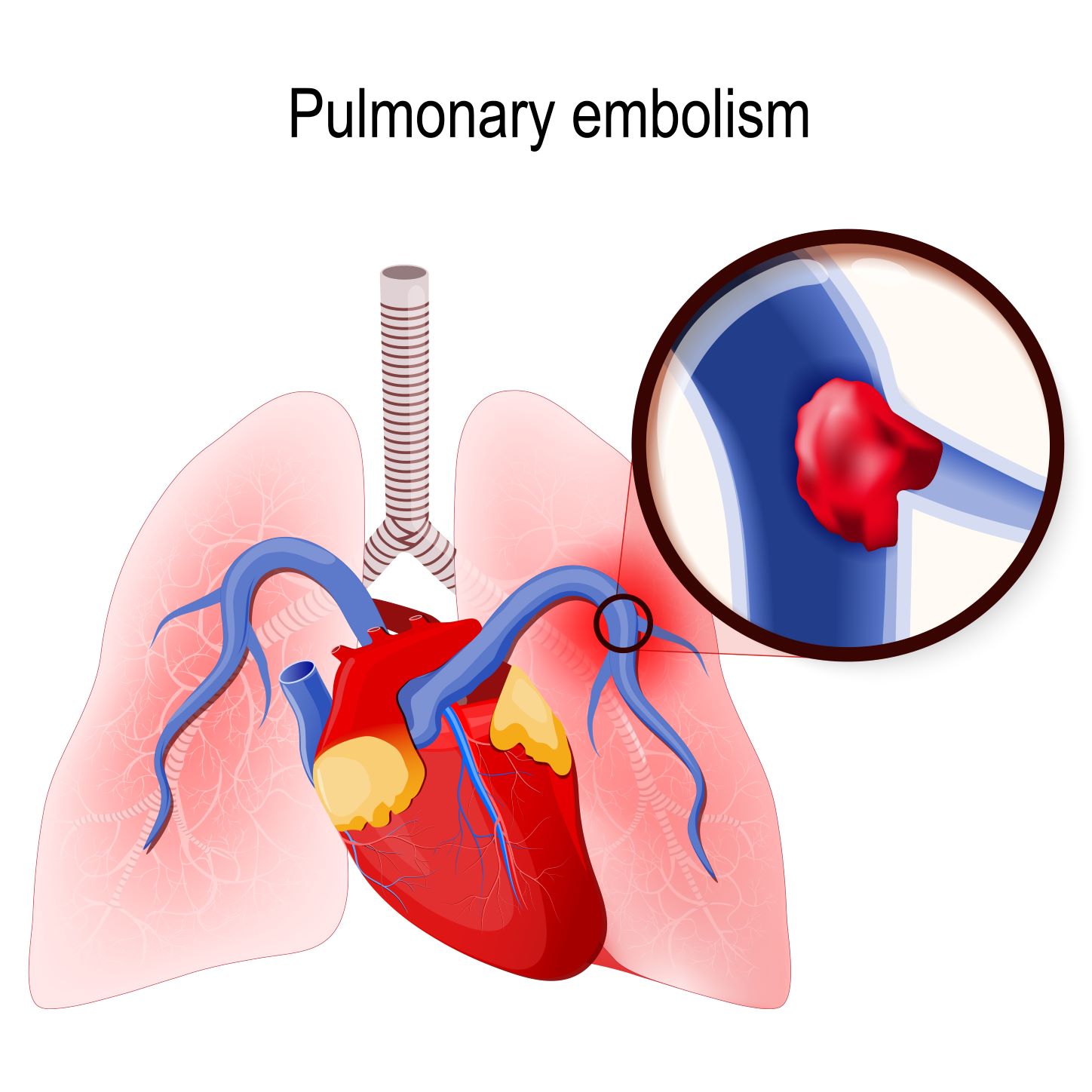Pulmonary Embolism in Elderly Adults: What To Know
Category:

Pulmonary embolism is a blockage of one of the main arteries in your lungs. It is caused by a blood clot that travels to the lungs from the leg. Unfortunately, pulmonary embolism is common and dangerous, with up to a third of cases being fatal.
Is Pulmonary Embolism Curable?
Let’s start with the good news. Can a pulmonary embolism kill you? Regrettably, yes. (That wasn’t the good news). The good news is that when diagnosed and treated correctly, 92% of people with a pulmonary embolism survive, and often do so without complications.
Before we return to the good news, we should explain how an embolism can kill you. An embolism prevents blood from getting where it needs to go. A pulmonary embolism is specific to the lungs, meaning the lungs are not getting the blood they need to function properly. This can make it difficult to breathe.
Symptoms of a pulmonary embolism include:
-
Shortness of breath or trouble breathing
-
Sharp, knife-like chest pain when you inhale
-
Coughing or coughing up blood
-
Rapid heartbeat
If you or a loved one experiences any of these symptoms, particularly if they have a history of blood clots, you should call an ambulance immediately. An exam and potential tests can determine if they have a pulmonary embolism and treatment can begin. The sooner treatment begins, the higher the likelihood of recovering without complications.
How Long Before a Pulmonary Embolism Kills You?
Sadly, a pulmonary embolism can kill you instantly. You may hear stories about someone out taking a walk and falling over dead. This information, while frightening, is not meant to make you panic. Rather, it is to promote awareness about the dangers of blood clots.
Blood clots generally start in the legs, sometimes the veins deep in the leg are called Deep Vein Thrombosis. Luckily the treatment for blood clots in the leg in an elderly person is generally straightforward, requiring a few months of blood thinners and monitoring. Generally, a patient will begin to feel better as soon as the medication starts. In more serious cases, a filter may be inserted into the veins around the heart and lungs.
As mentioned earlier, the elderly person’s survival rate for a blood clot in the lung is relatively high, as long as you keep an eye out for symptoms and get to a doctor as soon as you suspect you may have a blood clot. Compression stockings are also helpful if you are prone to blood clots or spend a lot of time sitting or laying down, as these will help prevent blood clots from forming in the legs.
Download Our Heart Health Guide
The key to pulmonary embolism is prevention. If you suspect a blood clot in the leg, see your doctor right away. Once you know you are prone to them, take the steps listed above to stay healthy and be on the lookout for signs and symptoms of a pulmonary embolism.
Subscribe
Date: April 28, 2022
Category:


